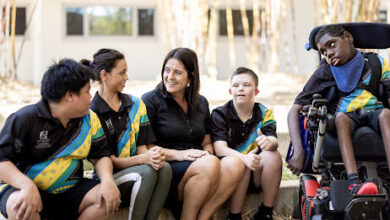MoE reports reveal insight into structured literacy approaches
Two reviews of early literacy approaches and an accompanying Ministry of Education commentary show promising initial results.

Three new publications from the Ministry of Education have provided an overview of the outcomes of recent structured literacy initiatives in schools.
The reports and accompanying MoE commentary were released ahead of last week’s announcement that the structured literacy approach would become mandatory in state schools from Term One of next year.
Read the latest print edition of School News HERE
The first publication is titled ‘Early Literacy Approach Evaluation: A snapshot’. It uses qualitative methods to interrogate the early stages of three literacy initiatives collectively known as the Early Literacy Approach. These were rolled out in 2021 to 2022. The report details findings from six cycles of rapid data collection and analysis of the ELA roll-out. In 2023, data collection on the impact of ELA on literacy attainment was conducted.

The second publication is ‘The Literacy and Communication Package Trial Final Evaluation Report’ which looked at three accelerative structured literacy approaches for Year 3 – 8 ākonga. This trial was conducted in Terms 3 and 4 of 2022. Fifty-one schools in seven regions participated. The trials included 114 teachers and 1113 students.
Alongisde the two reports, the Ministry of Education has also released their commentary ‘Six Insights from the Early Literacy Approach and Literacy and Communication Trial evaluations’ which summarised key findings from both reports.
Do structured literacy programmes improve outcomes?
Both reports found structured literacy approaches had significant benefit for ākonga and boosted literacy achievement.
The first report on the roll-out of ELA found that kaiako benefited from structured literacy training and were supported to implement the new approach. Capacity and confidence of teachers was uplifted. However, there were inconsistencies in implementation, integration and delivery of the structured literacy concepts. The R2RPP books and resources were found to be valuable and effective and relevant for the Aotearoa New Zealand context.
Both ELA programmes were associated with improvement in literacy but there was insufficient evidence for the extent of these improvements compared with existing practices. Initial data analysis suggests a “doubling” of expected ākonga progress over the same time-period. However, this is preliminary data only.
The proficiency gap between ethnicities, although closing, persists.
The report on structured literacy approaches for Years 3 to 8 similarly found improved teacher confidence and capability in using structured approaches. There was an improvement in literacy attainment, engagement and learning. Increased intervention impacts were noted for Pacific and female students though this finding was not consistent across all providers.
However, the report found these benefits were “fragile” as the infrastructure for these structured literacy approaches are under-developed and there is uncertainty around funding and future programmes. There was also a higher-than-expected literacy need identified in participating schools.
The report found students who received the most intensive intervention reported the most improvement. These students received 3 to 4 sessions per week over two terms.

Taking these findings together, the Ministry of Education noted in their commentary that persistent inequity in literacy progress and achievement persists. This is because rates of progress are similar across populations, however, NZ European and Asian students demonstrated higher initial literacy proficiency.
Intensive support was found to be more efficient and effective when begun at an earlier stage, which improved the likelihood of closing literacy attainment gaps.
Currently, the system of Tier 2 and Tier 3 literacy supports may not always accurately identify the level, intensity and length of teaching required for ākonga.
Systemic change was also found to require sustained effort, time and support. MoE noted there were “inherent tensions between fidelity and responsiveness.”
A lack of common assessment tools and a variation between providers, combined with intellectual property considerations made accurate assessment of impact difficult.
Finally, certain features of the initiatives themselves appeared to impact positive outcomes, introducing a certain confounding element.
Recommendations for future approaches to structured literacy in schools included standardising assessment, targeting interventions for earlier ages, continued support for teachers and sufficient access to appropriate resources.
Policy response
On Thursday last week, Education Minister Erica Stanford has announced that structured literacy will become mandatory in schools from 2025. The $67 million pledged for the initiative will go toward funding for R2RPP books and additional support and training for teachers.
NZPF President Leanne Otene has said that the pace of rollouts will be “overwhelming” to teachers, and criticised the mandating of structured literacy.
“A single option will not be effective in every context or for every student in our culturally diverse country,” said Otene, cautioning that the approach is “not a silver bullet.”
NZEI Te Riu Roa President Mark Potter agreed. In a press release, Potter said that although there is “recent evidence” that structured literacy works for many, there is also evidence that personalised learning is “the key art teachers bring to their work”.
“Teaching is an art and a craft, not just a science. A teacher knows what teaching approach will work best for the variety of learners in their classroom. Mandating a one-size-fits-all to curriculum does not work.
“We don’t expect politicians to tell doctors exactly what to prescribe for every patient, and politicians reaching into every classroom and telling every teacher how to teach every child undermines the professionalism of teachers.”
The full reports and recommendations can be read here.









